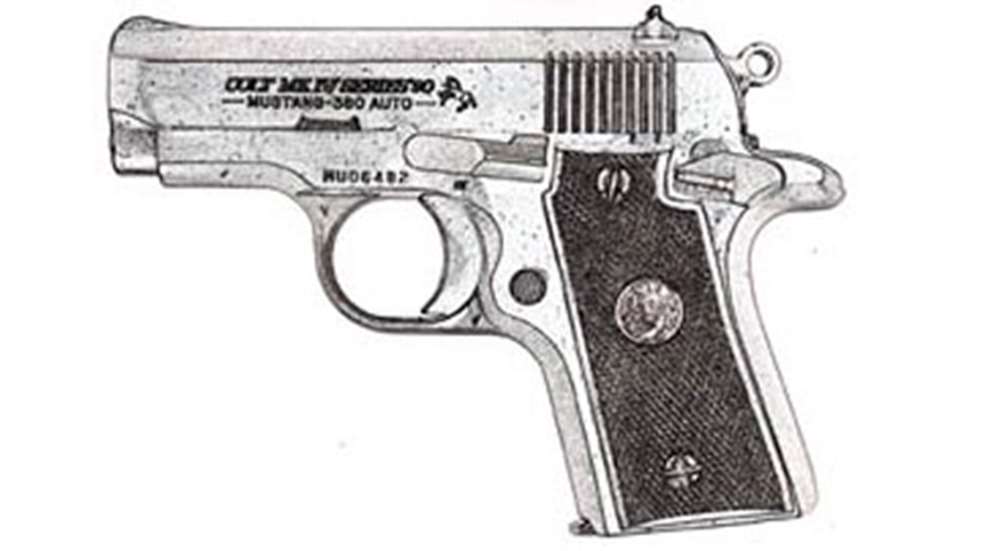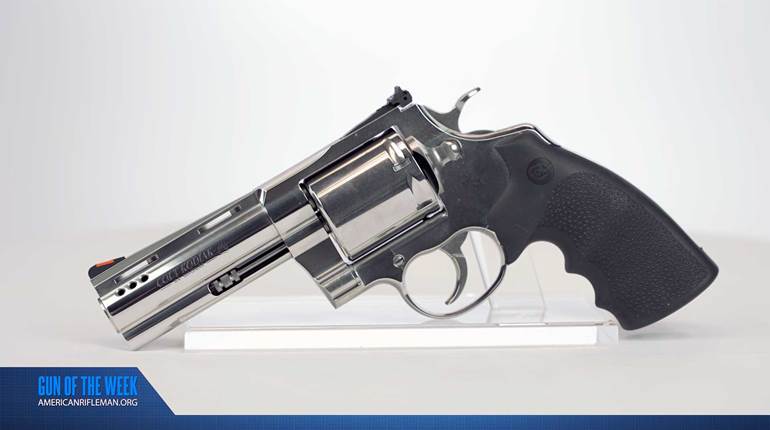
Over the years, Colt has made several forays into the pocket .380 ACP pistol market. Its first offering was the Model 1908, or Model M, which is still regarded as one of the best concealment pistols. In the 1960s Colt announced tentative plans to market the Colt Pony, which was to be a steel-frame derivative of the Star DK, but those plans never materialized.
In 1983 Colt introduced the .380 Government Model, in many ways a scaled-down, 21 3/4-ounce version of the .45 ACP Government Model, with a similar barrel bushing, magazine catch, extractor, firing pin and stop, a plunger-type firing pin safety, and single-action operation allowing cocked-and-locked carry. However, barrel lockup was accomplished not by a M1911-style link, but via an enclosed, integral cam track as in the CZ-75. It lacked many other standard M1911 features as well, such as a grip safety and removable mainspring housing.
In 1986 Colt introduced a smaller, lighter and somewhat simplified version of the Government Model .380, the Mustang. While the firing mechanism was identical, the Mustang design eliminated its predecessor’s barrel bushing and spring plug. The new gun also featured a dual recoil spring rather than the .380 Government’s single coil spring, and incorporated a flexible synthetic full-length recoil spring guide positioned in a hole in the slide face. The Mustang measured ½ inches shorter in both height and length, was 3 ounces lighter in weight, and with a five-round magazine capacity, held two fewer rounds than the Government .380.
The Mustang’s popularity spawned a number of variations. The Pocketlite, brought out in 1987, used an aluminum frame, thus reducing total weight by 6 ounces to only 12 1/2 ounces. The Mustang Plus II made its debut in 1988, and combined a Mustang slide with the .380 Government Model’s longer frame for two rounds more capacity.
In 1993, the Colt Custom Shop introduced the Nite Lite .380, a modified Mustang with bar-dot tritium night sights, stainless-steel slide, a Teflon-coated aluminum frame and a high-capacity magazine with extended base pad. As recently as 1996, Colt cataloged steel-frame Mustangs in blue or stainless and Pocketlite models with either blue or stainless slides with black anodized or gray Teflon-coated aluminum receivers, respectively.
In spite of its small size and light weight, the Mustang is relatively pleasant to shoot, thanks to good grip frame design and its short single-action trigger.
Disassembly
First, ensure that the pistol is unloaded. Remove the magazine, lock the slide back and check to see that there is no round in the chamber. Align the semi-circular disassembly notch in the slide with the round lug on the slide stop, push the end of the slide stop protruding from the right side of the pistol and remove the slide stop. Pull the slide forward off the receiver. Be careful not to lose the small wire slide stop spring in the recess beneath the slide stop.
Invert the slide and pull the rear of the recoil spring guide up and away from the barrel, being careful to control it against the tension of the dual recoil springs. Lift the barrel out of the slide.
While depressing the firing pin with a punch, remove the firing pin stop downward and out of the slide. Be careful not to let the firing pin fly out. With the stop removed, both the firing pin and its spring and the extractor can be pulled out of their respective recesses in the slide.
The Mustang features a firing pin block similar in general function to that found in Series 80-type M1911s. Instead of the Series 80 dual levers, the Mustang’s firing pin lock is depressed by the ejector, which is activated by the trigger. When the trigger is pulled, the ejector rises to depress the lock plunger, allowing full firing pin travel. The lock plunger blocks the firing pin at all other times.
Unlike Series 80-type pistols, which allow easy removal of the firing pin lock, the Mustang design retains this part under its rear sight. It is neither recommended nor is it necessary for routine maintenance or cleaning to remove the rear sight to gain access to the firing pin lock plunger.
Disassembly of the receiver components should be limited to removal of the stock panels to allow access for cleaning or to raise the ejector. Removal of the safety is easily accomplished, but serves no purpose for cleaning or routine maintenance, and incurs the risk of losing the spring-loaded safety plunger and its spring. Reassemble in the reverse order.





































